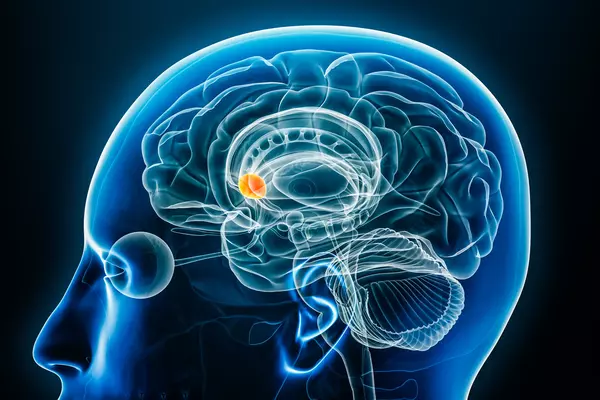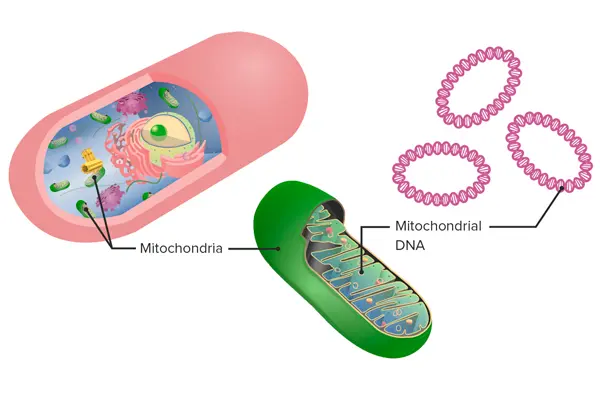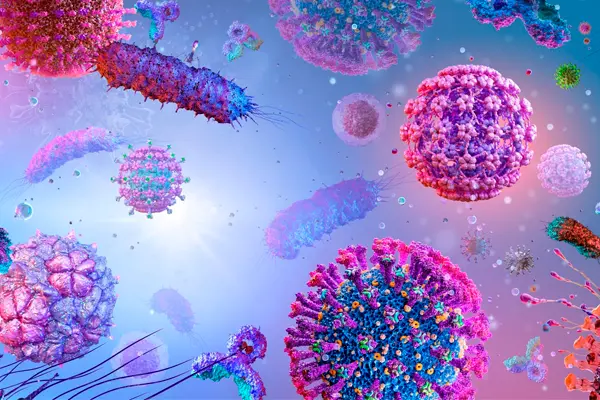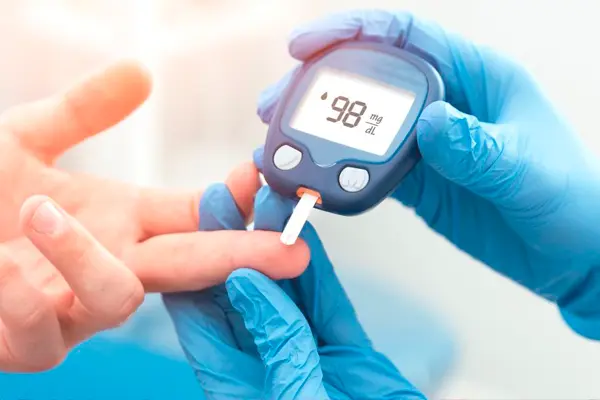Dopamine transporter genes

If you tested your DNA with a personal genomics service like 23andMe, AncestryDNA, FamilyTreeDNA, MyHeritage or another testing company, you can learn more about your risk factors for hundreds of diseases. By clicking the button above ⬆️, you can upload your raw DNA data file and receive a personalized 250-page health report with research links that is the most comprehensive.
The membrane-bound protein called the dopamine transporter (DAT), also known as the sodium-dependent dopamine transporter, is involved in pumping dopamine out of the synaptic cleft and back into cytosol. This vital process clears up most of this neurotransmitter from synapses via reuptake through DATs but studies show that there might be a larger role played by norepinephrine transporters instead in some cases, particularly so with regards to prefrontal cortex functioning. The human gene SLC6A3 which codes for DAT1 generates such integral proteins required inside our bodies. After being pumped out by Dopamine Transporter or its variants it gets sequestered inside cellular vesicles where storage occurs prior release at future moments when requisite levels are attained within neural networks around body sections including brain areas requiring processing balance and appropriate integration thereof!
The production of the dopamine transporter protein, also known as DAT, is facilitated by TheSLC6A3 gene. This crucial component is present within specific neurons in the brain's membrane and operates to transport dopamine molecules into these cells - a neurotransmitter responsible for transmitting signals from one neuron to another. Its pivotal role extends towards supporting various functions such as cognition, motivation, behavior and movement control among others.
Dopamine is discharged into the synaptic cleft, which lies between neurons, in order to convey signals. Following this release, it links up with receptors present on neighboring neuron surfaces. To enable its recycling within the neurons themselves, dopamine is brought back from the synaptic cleft using a transporter that operates as per its activity levels - determining both duration and available quantity of dopamine in this area. It can be inferred that for brain-based dopamine signaling systems, such transporters are indeed critical controllers of essential processes.
Follow the link of the selected polymorphism to read a brief description of how the selected polymorphism affects Dopamine and see a list of existing studies.
SNP polymorphisms related to the topic Dopamine:
| rs12364283 | The striatal polymorphism of the D2 receptor is a novel genetic marker of multiple addiction phenotypes: alcohol, nicotine, heroin and opioid dependence. |
| rs3025382 | The polymorphism is associated with increased nicotine dependence. |
| rs26907 | The polymorphism is associated with increased alcohol dependence. |
| rs324420 | The genetic variant FAAH is associated with problematic drug use, namely marijuana, opioids, and methamphetamine. |
| rs1125394 | The DRD2 polymorphism modulates reward and emotion processing, dopamine neurotransmission, and openness to experience. |
| rs167771 | The dopamine receptor-3 (DRD3) gene is associated with specific repetitive behaviours in autism spectrum disorders. |
| rs4436578 | The dopamine D2 receptor gene is associated with weight gain in schizophrenic patients with long-term treatment with neuroleptics. |
| rs1799978 | The dopamine D2 receptor gene is associated with weight gain in schizophrenic patients with long-term treatment with neuroleptics. |
| rs4648317 | Tendency to higher nicotine dependence, increased impulsivity and thrill-seeking. |
| rs1800497 | TaqIA polymorphisms of the DRD2 dopamine D2 receptor gene are associated with concomitant alcohol use and depressive disorders. |
| rs2242446 | Risk of orthostatic intolerance - dizziness or fainting that occurs with prolonged standing or upright posture. |
| rs1486009 | Risk of developing an opioid use disorder (OUD). |
| rs2007153 | Polymorphisms associated with Alzheimer's disease, Parkinson's disease and schizophrenia. |
| rs921451 | Polymorphism of the dopamine transporter type 1 gene alters response to treatment in Parkinson's disease. |
| rs6265 | Increased risk of ADHD or depression. Slightly faster decline in mental abilities in patients with Alzheimer's disease. The presence of this BDNF polymorphism is associated with differences in brain motor system functioning, altered short-term plasticity, and greater error in short-term motor learning. |
| rs165599 | Genetic variability in COMT increases the risk of psychotic and affective disorders. |
| rs1049353 | Genetic variability in cannabinoid receptor 1 (CNR1) causes addiction to cannabis. Also associated with weight gain when taking neuroleptics. |
| rs752306 | Genetic polymorphism of the dopamine D4 receptor increases the risk of attention deficit hyperactivity disorder in children. |
| rs2283265 | Functional variants of the dopamine receptor gene are a potential factor in neuropsychiatric disorders. |
| rs1079597 | DRD2 polymorphisms confer an increased risk of autism spectrum disorders and schizophrenia. |
| rs1108580 | Dopaminergic pathway gene polymorphism and genetic predisposition to Parkinson's disease and schizophrenia. |
| rs5326 | D1 dopamine receptor gene is associated with the length of the interval between first heroin use and onset of dependence in heroin addicts. Also influences the increased risk of salt-sensitive hypertension. |
| rs4633 | Catechol-O-methyltransferase deficiency is associated with total plasma homocysteine levels and may increase the risk of venous thrombosis. |
| rs6269 | Catechol-O-methyltransferase (COMT) breakdown is associated with increased pain sensitivity in humans and in the development of chronic widespread pain, fibromyalgia. |
| rs4867798 | Breakage of the dopamine D1 receptor gene increases the risk of paranoid schizophrenia. |
| rs10761482 | Association of the ANK3 risk allele with cognitive ability and bipolar disorder. |
| rs1079598 | Associated with weight gain caused by antipsychotic drugs (neuroleptics). |
| rs1611115 | Associated with lower plasma dopamine beta-hydroxylase activity, increased risk of Parkinson's disease, ADHD. |
| rs5320 | Associated with attention deficit hyperactivity disorder in children. |
| rs6277 | Associated with a 1.6-fold increased risk of schizophrenia. |
| rs10994336 | Ankyrin variant 3 (ANK3) is an independent genetic risk factor for bipolar disorder. |
| rs4532 | Affects dopamine D1 receptors associated with autism spectrum disorders. |
| rs686 | Affects dopamine D1 receptors associated with autism spectrum disorders. |
| rs265981 | Affects dopamine D1 receptors associated with autism spectrum disorders. |
| rs2295193 | A variant of the estrogen receptor I (ESR1) gene is associated with anorexia nervosa and eating disorders. |
| rs1076560 | A variant of the dopamine D2 receptor gene increases the risk of early Parkinson's disease. |
| rs3785143 | A variant of a rare protective allele in the norepinephrine transporter gene causes risk of attention deficit hyperactivity disorder. |
| rs1006737 | A polymorphism of the potential-dependent calcium channel gene CACNA1C, is associated with risk of bipolar disorder, schizophrenia and other psychiatric disorders. |
| rs2159100 | A polymorphism of the potential-dependent calcium channel gene CACNA1C, is associated with risk of bipolar disorder, schizophrenia and other psychiatric disorders. |
| rs6280 | A polymorphism of the dopamine D3 receptor gene is associated with chronic schizophrenia or schizoaffective disorder. |
| rs1611123 | A gene variant that increases nicotine dependence and difficulty quitting smoking. |
| rs6347 | A functional variant of the dopamine transporter gene associated with the development of schizophrenia |
| rs27072 | 2-fold risk of severe alcohol withdrawal. Associated with more severe symptoms after alcohol withdrawal, such as seizures and white fever. Possible increased chance of ADHD. |
| rs2302729 | |
| rs216013 | |
| rs7876027 | |
| rs3025422 | |
| rs2519154 | |
| rs5322 | |
| rs1541332 | |
| rs1108581 | |
| rs77905 | |
| rs3025399 | |
| rs10993949 | |
| rs4703822 | |
| rs17410422 | |
| rs17030795 | |
| rs8044769 | |
| rs3773678 | |
| rs2440390 | |
| rs1076563 | |
| rs9824856 | |
| rs9288993 | |
| rs4460839 | |
| rs12363125 | |
| rs1800499 | |
| rs11214606 | |
| rs2734838 | |
| rs2734833 | |
| rs3776512 | |
| rs460000 | |
| rs2617605 | |
| rs28363168 | |
| rs968529 | |
| rs3735273 | |
| rs7633291 | |
| rs324026 | |
| rs167770 | |
About The Author
Li DaliLi Dali, a National Foundation for Outstanding Youth Fund recipient, is a researcher at the School of Life Sciences in East China Normal University. He earned his PhD in genetics from Hunan Normal University in 2007 and conducted collaborative research at Texas A&M University during his doctoral studies. Li Dali and his team have optimized and innovated gene editing technology, leading to the establishment of a world-class system for constructing gene editing disease models.


